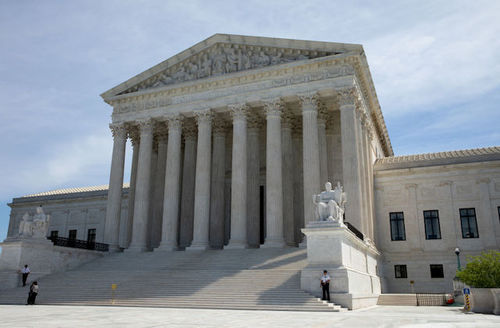On the 65th anniversary of the ruling in Brown v. Board of Education, Lang Center for Civic and Social Responsibility senior fellow Roseann Liu breaks down why it’s imperative to call out racism when advocating for fair school funding.
Sixty-five years ago, the United States Supreme Court issued a landmark ruling in Brown v. Board of Education. The National Association for the Advancement of Colored People, representing plaintiffs, argued that segregated schools violated the equal protection of the law guaranteed by the 14th Amendment of the U.S.Constitution. The justices agreed. The unanimous 9-0 decision declared that “separate educational facilities are inherently unequal” and ordered school districts to desegregate. Civil rights activists celebrated this decision.
But for many students today, Brown represents the unfulfilled promise of equal educational opportunities.
Although school integration reached its peak in the 1970s, it began to decline in the early-1990s, when districts were released from court oversight. Today, school segregation levels have returned to those of the 1960s.
But desegregation was never the end goal. Robert L. Carter, a leading NAACP attorney on the case, wrote in Derrick Bell’s “Shades of Brown: New Perspectives on School Desegregation”: “the fundamental vice was not legally enforced racial segregation itself; this was a mere by-product, a symptom of the greater and more pernicious disease—White supremacy.”
Civil rights lawyers continue to advance racial equality in education, but now through other means: school funding. While few school segregation lawsuits exist today, school finance cases have been filed in 46 out of 50 states since 1973, with active lawsuits in 14 states.
Instead of claiming that “separate is inherently unequal,” school funding lawyers are now fighting for “separate but truly equal.”
Despite the fact that current school funding schemes overwhelmingly disadvantage students of color, plaintiff lawyers do not often argue that school funding discriminates based on race; even rarer are decisions that rule in favor of plaintiffs based on this argument.
Claims of racial discrimination in school funding are conspicuously absent from lawsuits.
This can be traced back to plaintiff lawyers shifting their strategy in the late-1980s, moving away from the claim that school funding is inequitably distributed based on equal protection clauses, to the claim that state funding is inadequate to provide students with a basic education guaranteed to them by state constitutions. That is, instead of re-slicing the pie, “inadequacy” claims seek to growthe pie.
When I interviewed lawyers about this change in strategy, they cited their concern that a racial discrimination claim would be seen as divisive. In contrast, inadequacy claims could bring together poor White districts and poor districts of color in the fight for more state money. These optics were thought to improve their chances of winning.
The move was largely successful. Throughout the 1970s and ’80s, when equity claims were made based on equal protection clauses, plaintiffs lost 66 percent of these cases. Since 1989, when lawyers shifted to inadequacy claims, effectively sidestepping claims of racial discrimination, plaintiffs won almost 60 percent of these cases.
These outcomes are no doubt a victory to students of color. And yet the legal strategies that led to these wins are out of step with growing evidence about racial bias in school funding that has been spotlighted recently. Nationally, non-White school districts receive $23 billion less than White school districts. In Pennsylvania, the least-White school districts get about $2,000 less per student than the state’s fair funding formula says it should have, while the most-White districts get around $2,000 more per pupil than determined by the formula.
By passing on race claims, lawyers also pass up the opportunity to build effective legal arguments about racially unjust school funding schemes. And since legal strategies set precedents for future cases, forgoing race claims not only effects the immediate suit, it also limits strategies for generations to follow.
Civil rights lawyers have the difficult task of crafting viable legal claims that will prevail in court. While avoiding the “third rail” of a race claim may improve chances of winning the case at hand, this comes at the cost of building the knowledge and legal strategies to successfully argue that school funding is racially biased.
School funding lawsuits represent a new terrain on which battles to achieve racial equality in education are fought. As this generation’s lawyers carry the torch, let them be inspired by the boldness of their predecessors, and be willing to call out the institutional racism that exists in education today.
Roseann Liu is visiting assistant professor in the Department of Educational Studies and senior fellow at the Lang Center for Civic and Social Responsibility at Swarthmore College. She is writing a book on race and school funding in the United States.
Source: https://www.colorlines.com/
